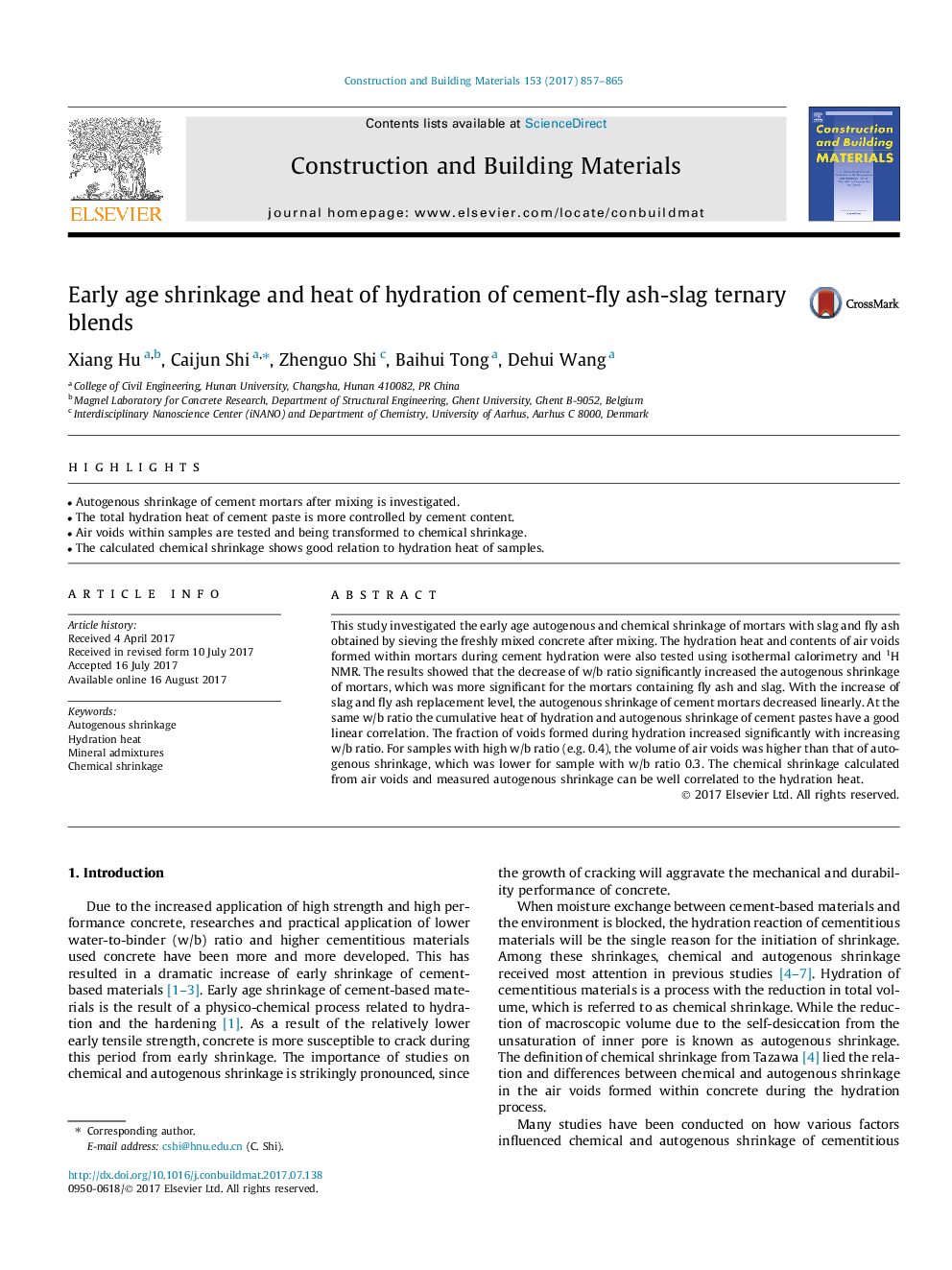| Article ID | Journal | Published Year | Pages | File Type |
|---|---|---|---|---|
| 4913028 | Construction and Building Materials | 2017 | 9 Pages |
Abstract
This study investigated the early age autogenous and chemical shrinkage of mortars with slag and fly ash obtained by sieving the freshly mixed concrete after mixing. The hydration heat and contents of air voids formed within mortars during cement hydration were also tested using isothermal calorimetry and 1H NMR. The results showed that the decrease of w/b ratio significantly increased the autogenous shrinkage of mortars, which was more significant for the mortars containing fly ash and slag. With the increase of slag and fly ash replacement level, the autogenous shrinkage of cement mortars decreased linearly. At the same w/b ratio the cumulative heat of hydration and autogenous shrinkage of cement pastes have a good linear correlation. The fraction of voids formed during hydration increased significantly with increasing w/b ratio. For samples with high w/b ratio (e.g. 0.4), the volume of air voids was higher than that of autogenous shrinkage, which was lower for sample with w/b ratio 0.3. The chemical shrinkage calculated from air voids and measured autogenous shrinkage can be well correlated to the hydration heat.
Related Topics
Physical Sciences and Engineering
Engineering
Civil and Structural Engineering
Authors
Xiang Hu, Caijun Shi, Zhenguo Shi, Baihui Tong, Dehui Wang,
